If you’ve been running your own website and have no clue where your web traffic is coming from, then you need a traffic analytics tool like Google Analytics to help with that. In this article, you’ll learn about Google Analytics, why you need it, and even how to add Google Analytics to WordPress.
What is Google Analytics?
Google Analytics is a free website traffic tracking tool that Google offers in-depth stats. You, as the user, can view these stats, and determine how to improve your website. The information is delivered in real-time, so you can see things like:
Clicks within your website
Purchases within your website
Where people exit your site
Where people enter your website
What device people used to surf your website with
If a visitor is a new user
If a visitor is a repeat visitor
Google Analytics can even tell you the age and gender or the person, as where they are from.
How Google Analytics Works
The process for Google Analytics is really simple.
You place the Google Analytics tracking code on your website (every page)
The user visits your site
Google Analytics code collects the data
Google Analytics servers stores, processes, and organizes data
Google Analytics serves reports to your GA account
From the report, you can determine what actions to take for your website, whether it’s to add or edit content, or figure out how to drive more traffic to specific pages. To expand upon this, Google Analytics has sectioned their dashboard into different areas where you can sort through the stats with ease.
Real-time
Audience
Acquisition
Behavior
Conversions
Real-time
Google Analytics tracks in real-time. So, if you’re on a site that uses Google Analytics for collecting site traffic data, then the tool is tracking you as you move about the site. From the Google Analytics dashboard, you can view how many people are currently on your site.
Audience
The Audience section pertains to your visitor’s demographics. You can learn about their age range, gender, where they are from, what kind of device they are using, what browser they surf with, their primary language, and more.
Acquisition
The Acquisition section is all about how you gained your website’s visitors. This section is super handy so you can learn where your visitors came from, whether directly, through a search engine, or from a social network site. You can use this to determine where you’d like to focus on drawing in more traffic, or improving your reach on other sites.
Behavior
The Behavior section of Google Analytics is about how the visitors surfs your website. Stats included in this are page views, how long your visitors stayed on your site, what web pages they went to, what web pages they left your site from, and more.
Conversions
The Conversions section takes all the data that Google Analytics collected on your site, and allows you to improve how people use your site. This is where you’ll focus on trying to get people to do something on your site, like filling out forms or buying your stuff.
Why Do You Need Google Analytics?
You’ve created a website for a purpose, right? Whether it’s to gain readers, subscribers, or buyers, you’re going to want to measure your website’s traffic. Going further, if you’re wanting to reach as many people as possible, you’re going to want to track your site’s progress. Both of these can be achieved with Google Analytics.
Google Analytics has been around since 2005 and that means if you want to attract advertisers, more than likely, you’ll want Google Analytics to track your site’s traffic. While there are a lot of other traffic tools, even Stats by WordPress.com, Google Analytics is trusted more than all of them.
Also, it’s completely free, and you can sync it with other Google properties, like Google Search Console, which monitors your site health.
How to Sign Up for Google Analytics
Before adding Google Analytics to WordPress, you need to sign up to Google Analytics. You don’t necessarily have to have a Gmail account, but you’ll need to verify whatever email address you choose to use for your Google Analytics account.
Once you have, you’re going to need to add a new Google Analytics Account specifically for your site. You’ll go to the Admin section in the bottom left corner of your Google Analytics Dashboard to find it. If you have other websites, you’ll still go to the same area.
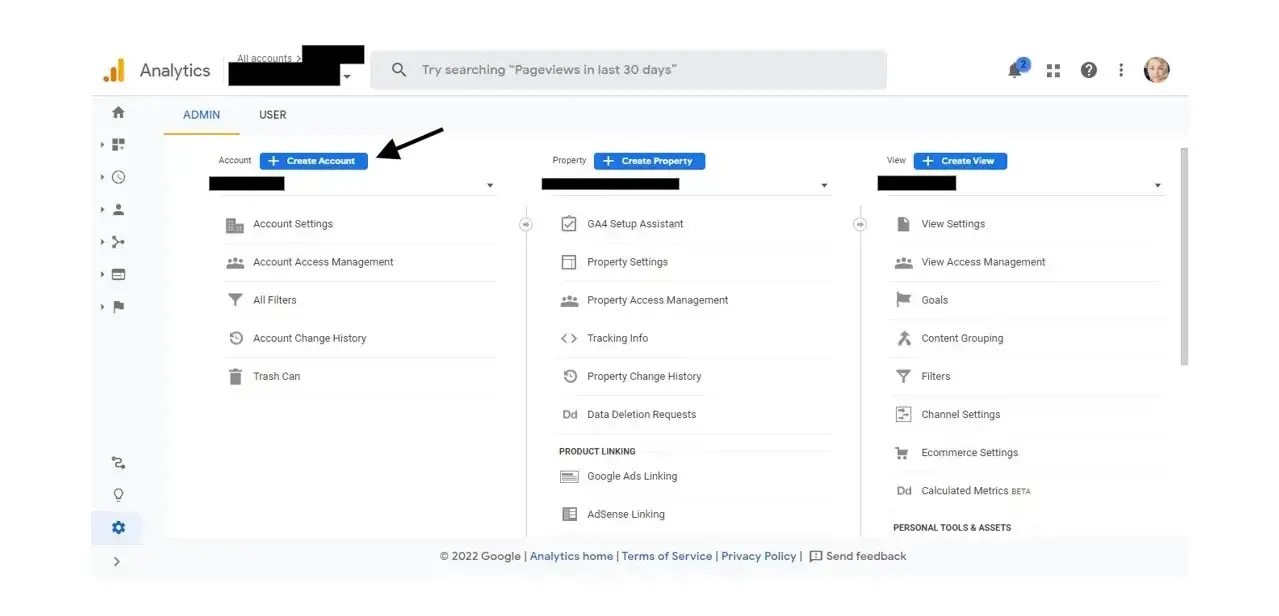
Step 1- Add your Account name or preferably site’s name if it’s a single site.
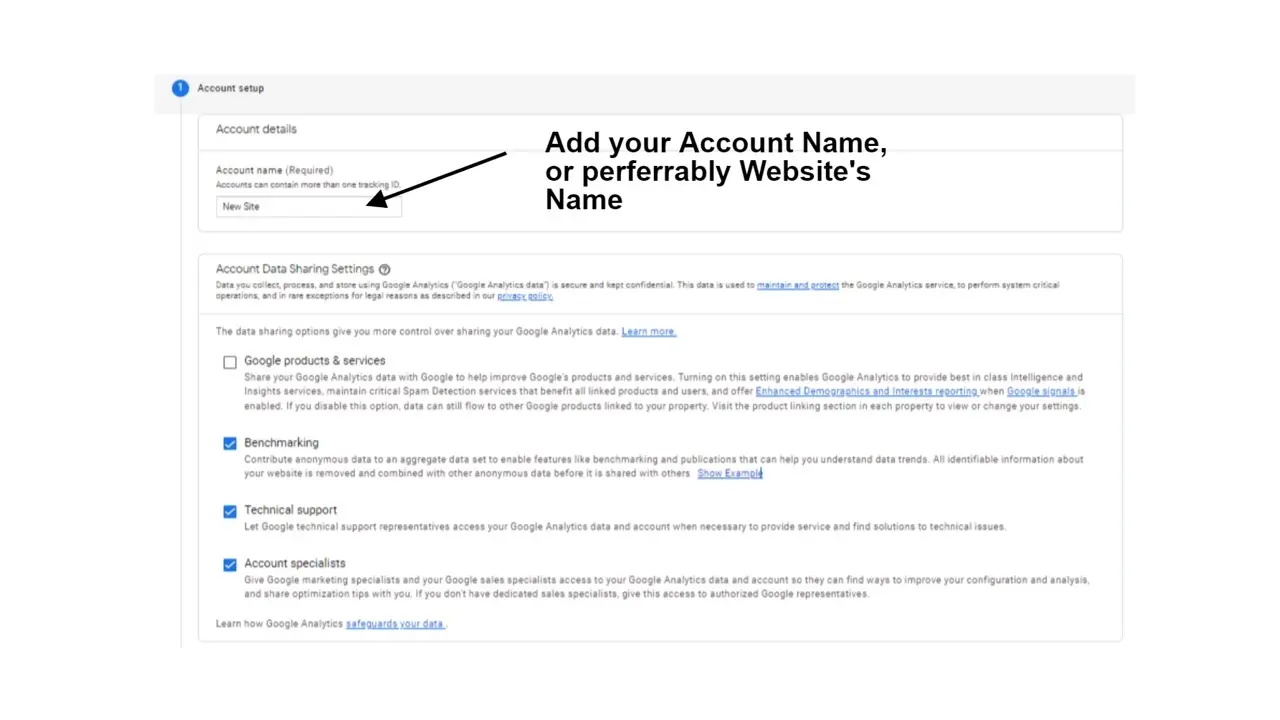
Step 2- If you’re only managing one site, just add your site’s name in the field. You can also select what time zone you want to track from, which is used in the real-time data. Lastly, you can select the currency your site will collect, if you are selling a product or service.
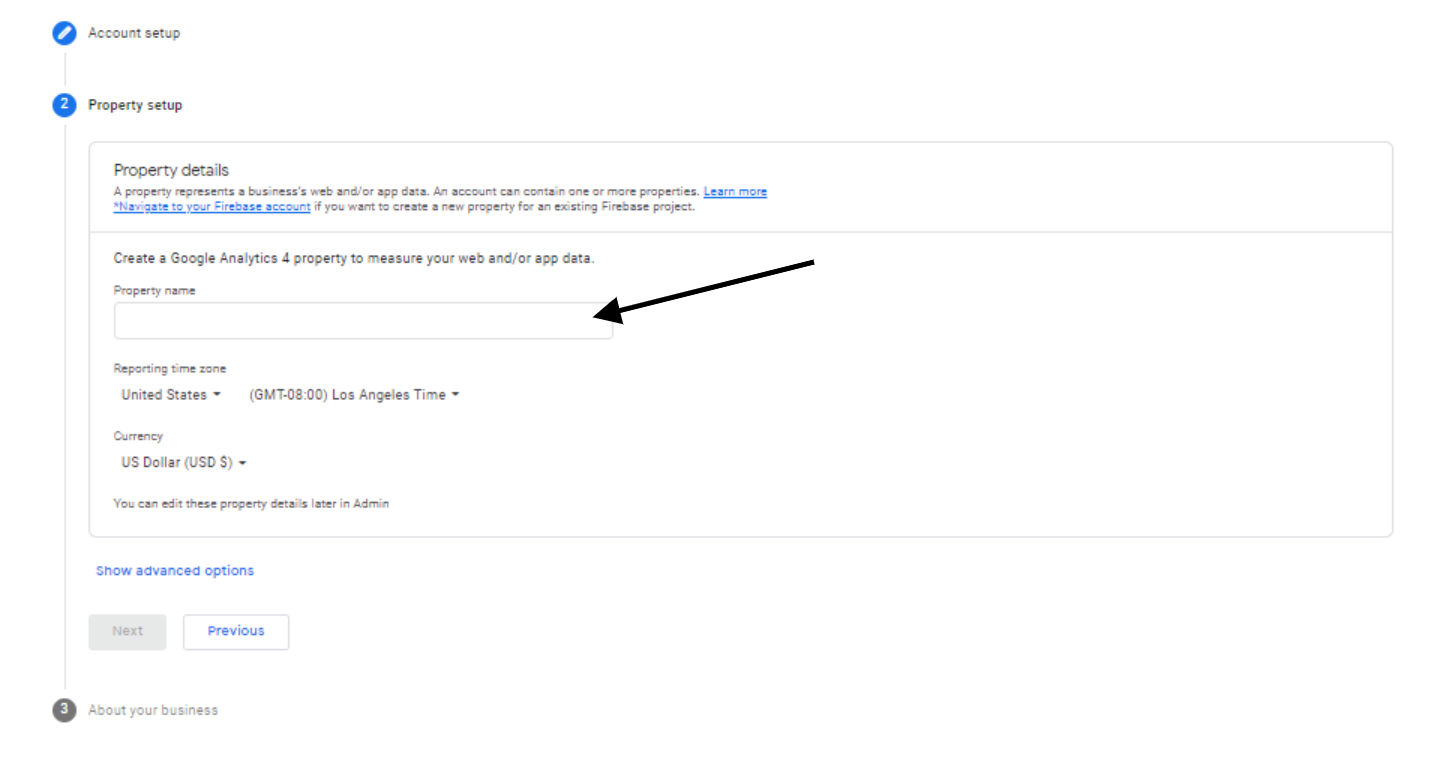
Step 3- Select what industry your site is in, business size, and what you intend to use Google Analytics for . Please note, that even if you’re a blogger and intend to eventually make money, you are also considered a business, so you will need to fill out this section anyway.
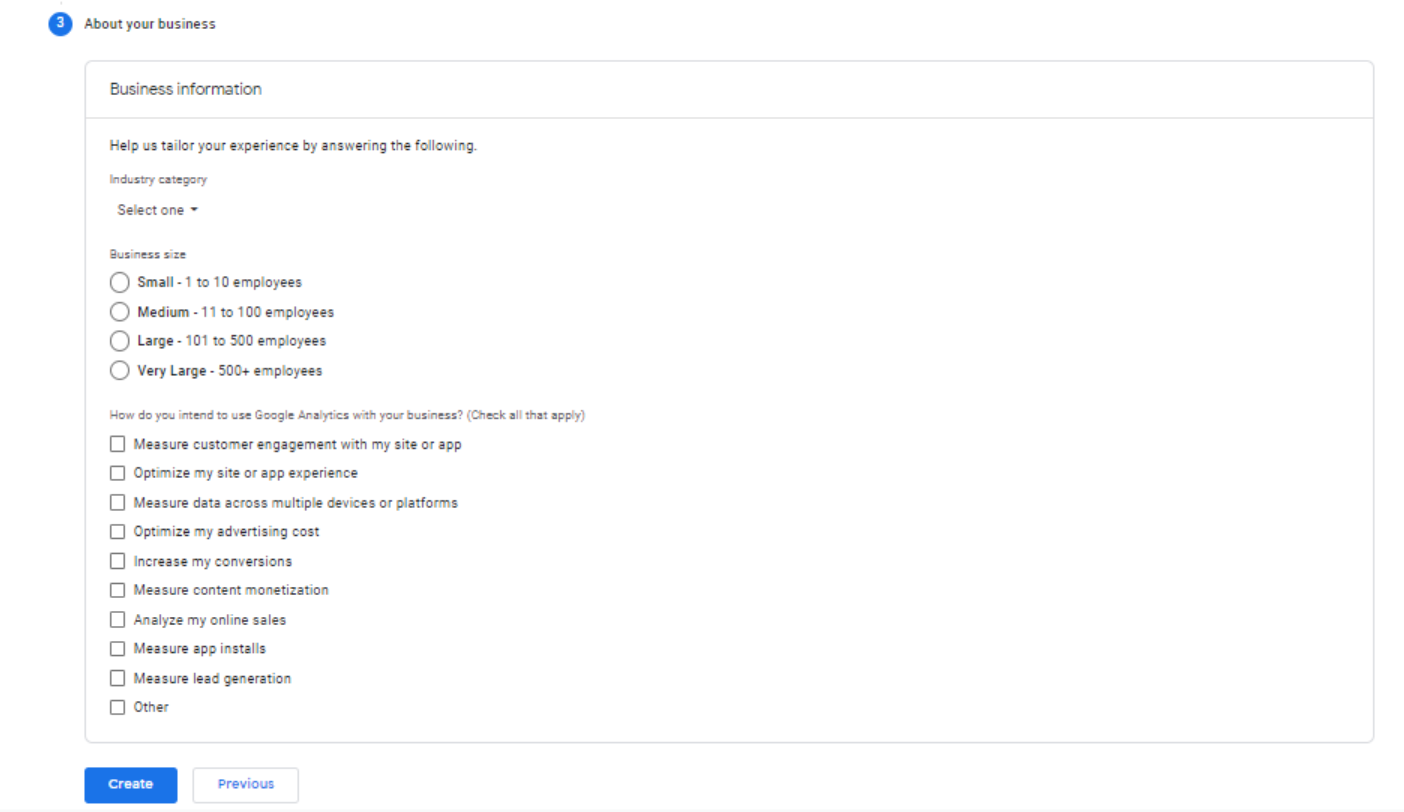
When you click the blue Create blue, you’ll get a popup prompt with Google Analytics terms of Service, that you’ll need to agree to, in order to use the service.
Once you’ve created a New Account, you need to add your Website’s URL to Google Analytics.
How to Add Your Website to Google Analytics
You’re about halfway through on how to add Google Analytics to WordPress. Right now, you have to let Google know what property to track, whether it’s a website or an app.
Step 1- Select what type of property you want to add. For this step, you’ll select Web.
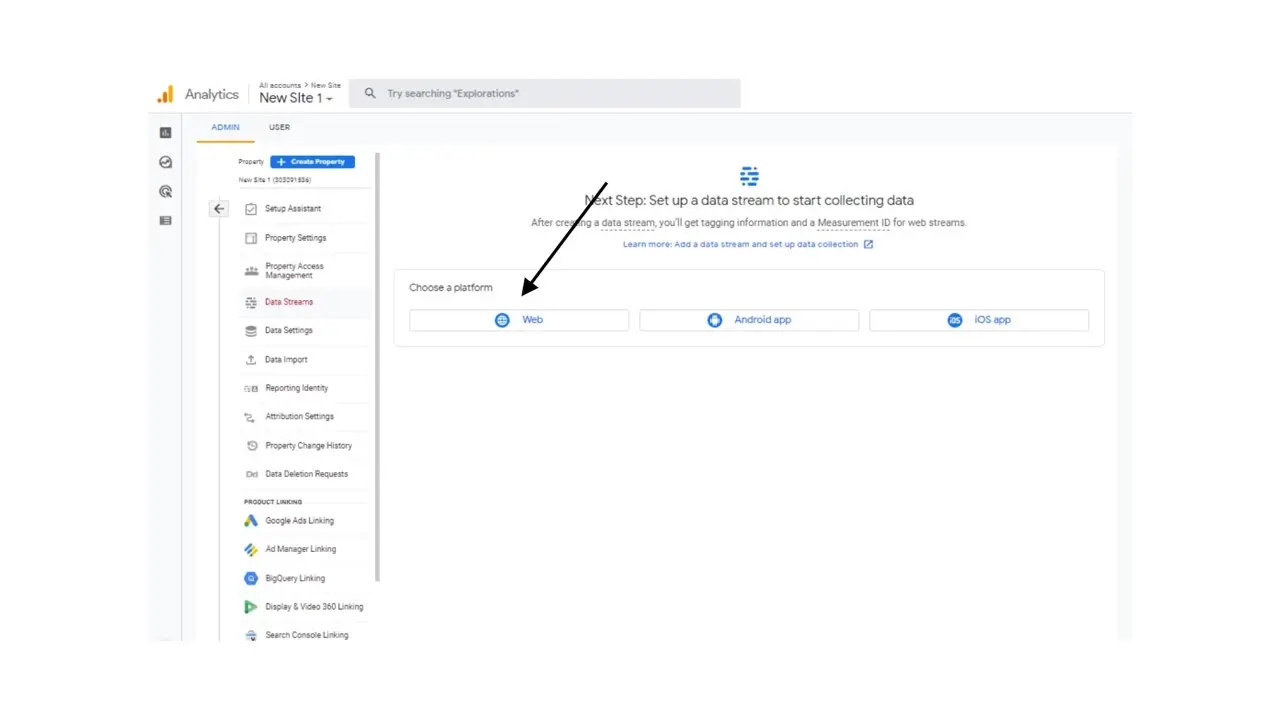
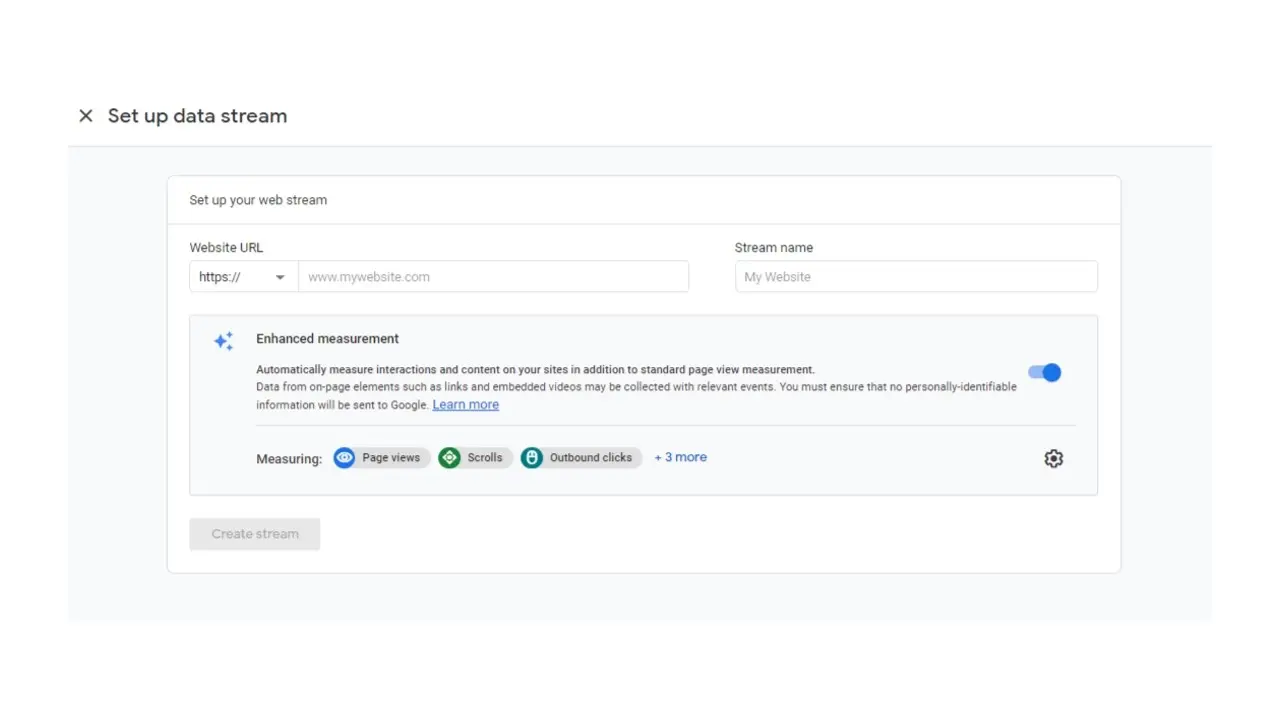
Add your site’s URL and name.
After this step, you’ll see a screen verifying that you added the site and you can get tracking code that you can put on your site. However, in the case of this article, you won’t need to copy the tracking code and figure out where to put it on your site.
How to Add Google Analytics to WordPress

Now, this last section is about getting WordPress and Google Analytics synced. For this, you’ll need a plugin called Google Analytics by MonterInsights. Please note that this plugin does offer premium extensions and features that you can pay for, but most basic users don’t need that.
Out of the box, the MonsterInsights plugin offers some site stats, but you can also click to view more stats directly within Google Analytics.
Step 1- Install Google Analytics by MonsterInsights and activate it. Once the plugin is activated, you’ll see a welcome screen. Click on the button that says Launch the Wizard. This is the easiest and fastest way to add Google Analytics to WordPress.
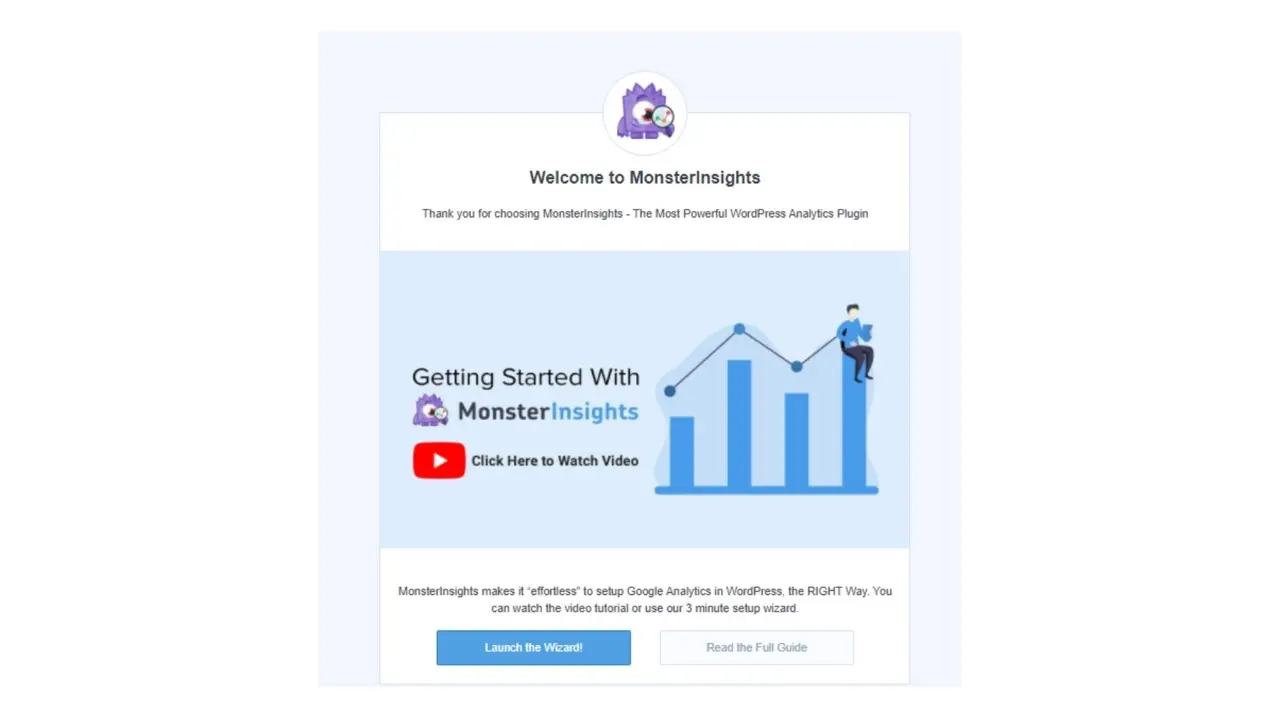
Step 2- Select what type of site you have, then click Save & Continue.
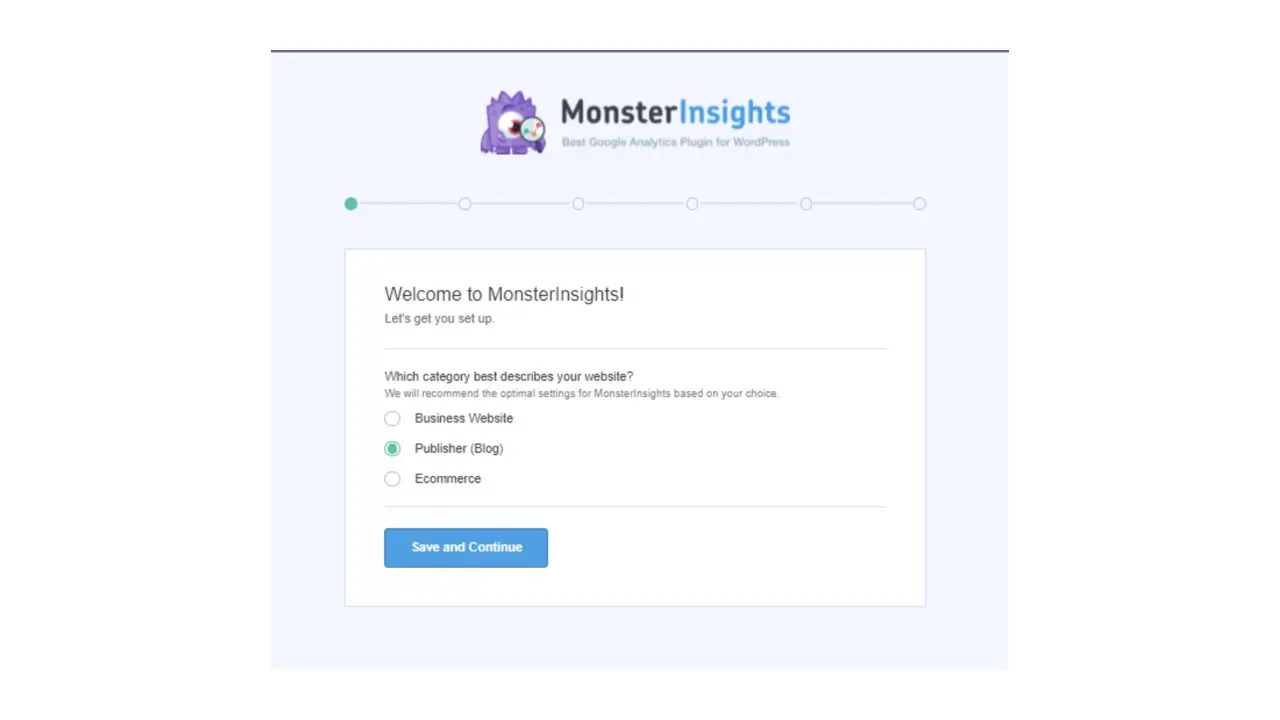
Step 3- This is where you’ll go through the process of using the plugin to sync WordPress and Google Analytics. Click the Connect MonsterInsights button to continue.
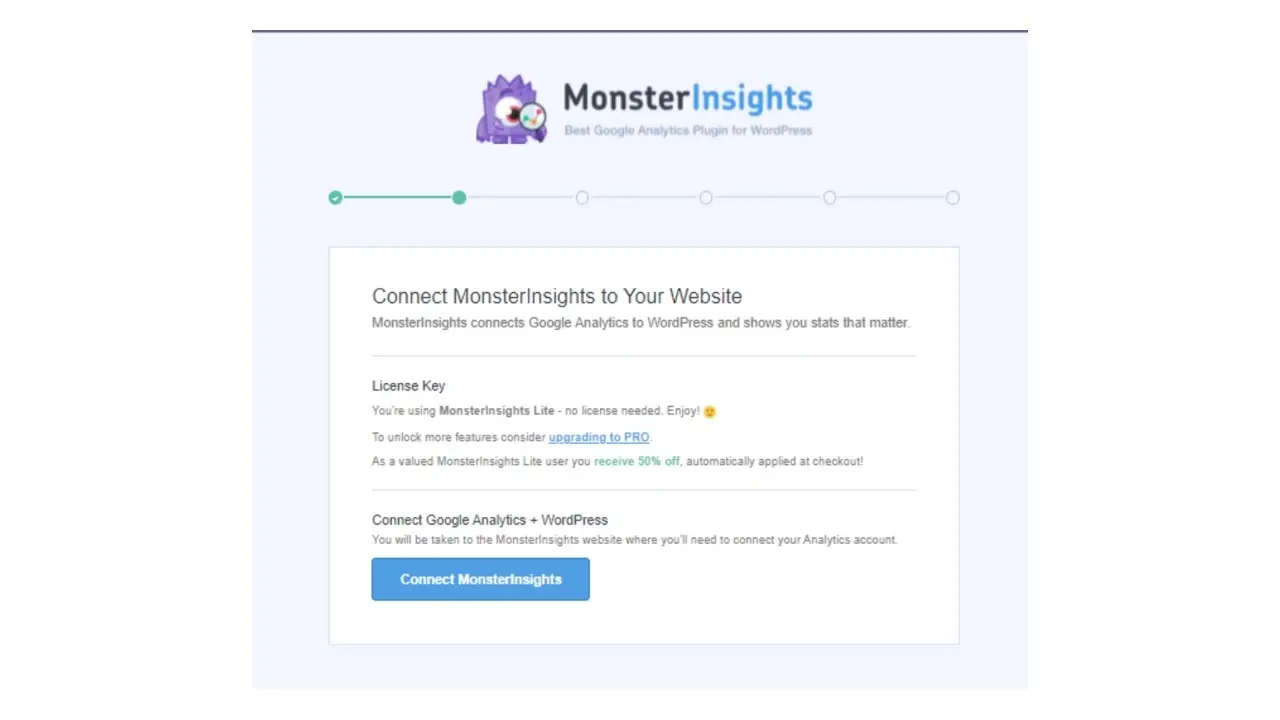
Step 4- Select what Google account you’re using. This would be the same Google account you’re using in Google Analytics.
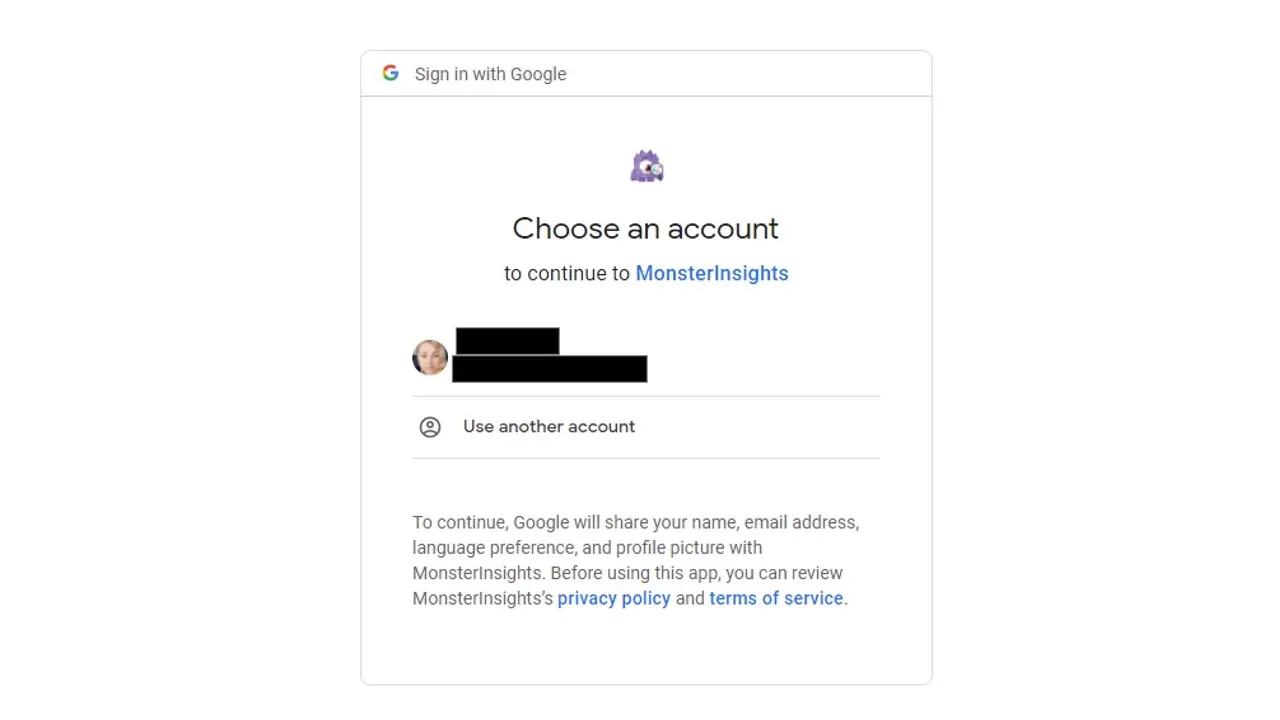
Step 5- Give MonsterInsights permission to access your plugin. Feel free to read what MonsterInsights needs to access before continuing.
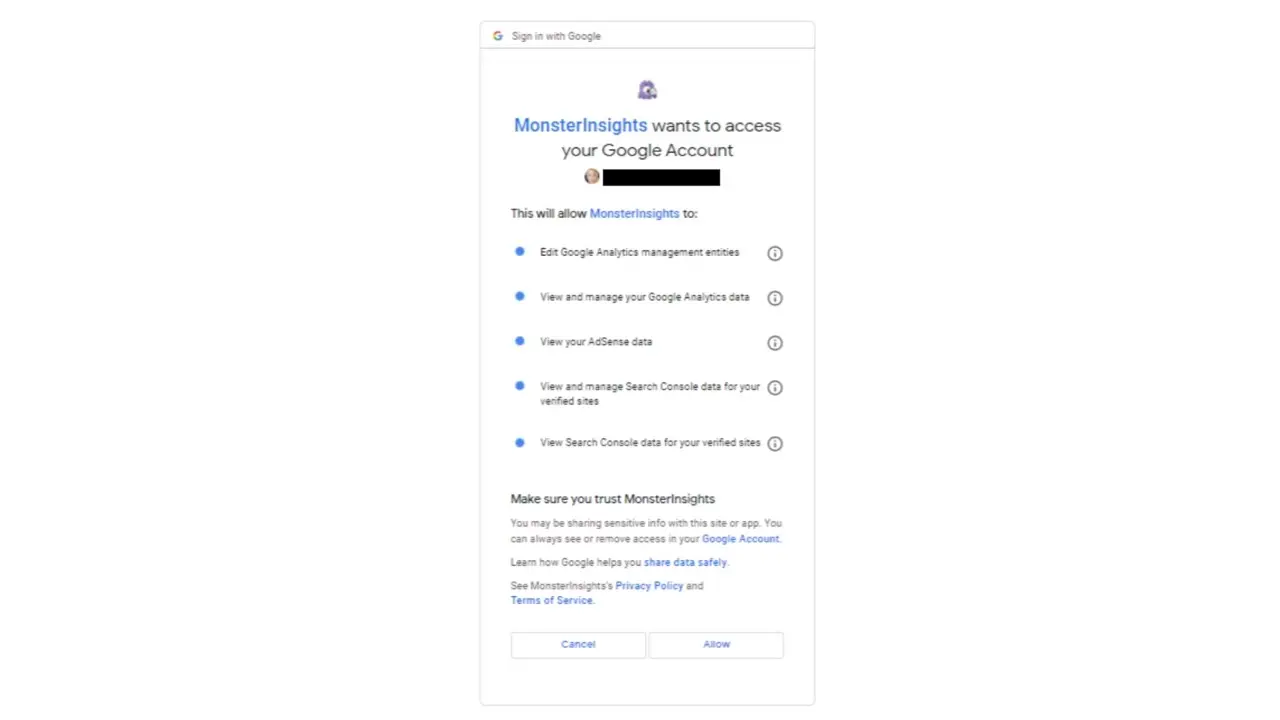
Step 6- Select the site from the site that you want to track. Click to complete the connection.
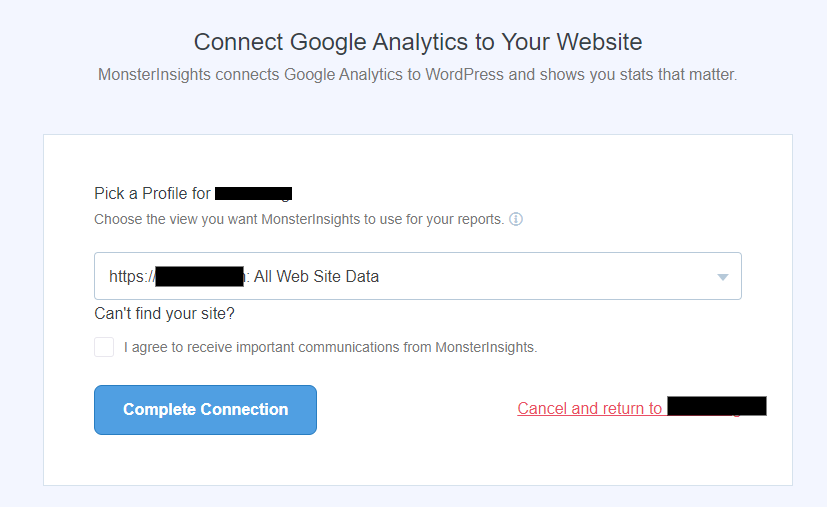
Google Analytics is now added to WordPress after this step. There are a few other windows in the MonsterInsights Launch Wizard, but you can click the button to skip through each. Once you’re out of the wizard, you’ll see other plugin settings. For most basic sites, you don’t need to adjust the MonsterInsight settings.
In Summary
If you’re not tracking traffic, and you want to build a successful website, it’s time to add Google Analytics. Hopefully this article has made it easier to understand what the tool has to offer, and that you’re able to add Google Analytics to your WordPress site.
Frequently Asked Questions
Can I find a free hosting for WordPress platform?
Yes, but you’ll find features somewhat limited and you’ll be restricted in the number of plugins you can use. Plus, you might find your site littered with ads from the hosting service.
Is a website on WordPress safe?
Websites on WordPress are safe, however to avoid hacking keep your website up to date.
Does Google have free web hosting?
Google doesn’t provide free hosting; however, they do provide PAAS (Platform As A Service), known as GAE (Google App Engine).
How much traffic can my WordPress site handle?
Most shared plans can manage around 1,000 to 2,000 visitors per day. If you expect more than this we’d recommend opting for VPS or dedicated WordPress hosting.

Nile Flores is a long time professional blogger, as well as WordPress website designer and developer from the St. Louis Metro East. Nile blogs at NileFlores.com, where she’s passionate about helping website owners, whether they’re small business owners or bloggers. She teaches about Blogging, Social Media, Search Engine Optimization, Website Design, and WordPress. Additionally, Nile loves to speak at WordCamps (WordPress conferences) across the United States. When Nile isn’t knee-deep in coding, she’s a proud mom of a college student, and enjoys oil painting, cigar smoking, nail art design, and practicing traditional Okinawan kempo karate.
View all posts by Nile Flores



















